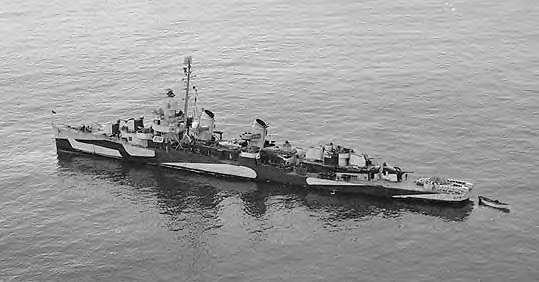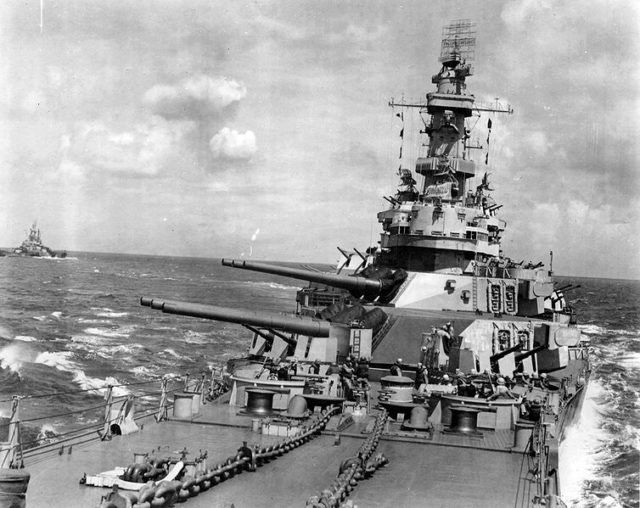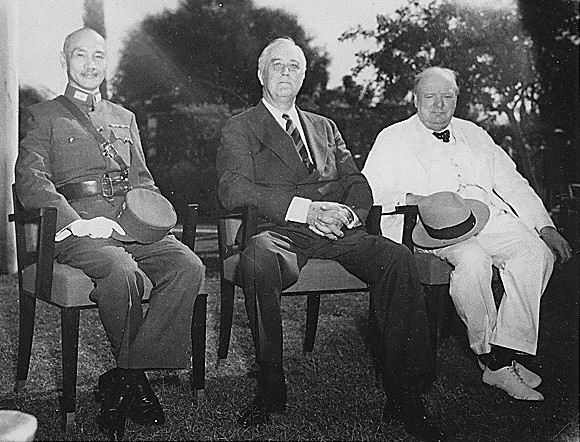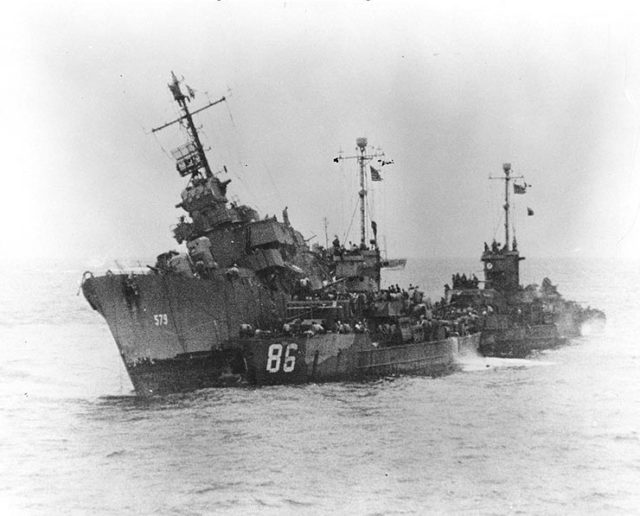Be it in war or peace, mishaps do happen. But when you’re commanding a warship on a top-secret mission to escort probably the most important political figure in the universe, torpedoing his vessel might be considered to be a bit more than a mistake. Rather, a full-on calamity. But let us put things in perspective – although short-lived, the entire history of USS William D. Porter was an utter disaster.
Said warship was commissioned on July 6th, 1943, under the command of a promising captain Wilfred A. Walter. The ship was a Fletcher-class destroyer, meaning its purpose was to serve as a bodyguard to larger vessels often incapable of defending themselves against smaller and more agile ships.
The first mission given to “Willie Dee” – as it came to be known – was to join a fleet that was to take president Franklin D. Roosevelt to a meeting with Churchill and Stalin in Teheran. Out of its 16 officers, only four had served on a ship before. Whoever made the actual decision to assign a vessel with such an inexperienced crew to a mission like that probably didn’t have much experience himself.
The ship departed Norfolk on November 12th, 1943. It was to meet the USS Iowa, secretly carrying the president, the secretary of state and joint chiefs of staff. But the very beginning of its journey showed signs of things to come. As someone forgot to lift the anchor all the way, it scraped along a nearby ship completely destroying its railings, lifeboats, and other equipment. Oops. As they were running late to meet the president, they basically just said “sorry guys” and kept on going.

A day later, Porter joined the convoy and headed across the Atlantic. The journey was to last eight days. These kinds of expeditions require full fighting efficiency. Thus, all of the boats are required to perform training exercises along the way. Already on November 13th, the first one took place and Willie Dee was tasked with dropping fake anti-submarine depth charges.
The only problem was, they weren’t so good at discerning fake from real. So at one point, our troublesome ship dropped a live depth charge, to much distress of the rest of the convoy. Everyone thought the cover was blown and Nazis were going for the president himself. Two incidents in two days. Good job.
But each day brings a new adventure. The very next day, probably eager to find out whether at least his own ship was able to handle its combat equipment, Roosevelt requested an anti-aircraft practice to take place. The crew of USS Iowa let loose dozens of balloons and shot at them, to much praise. Alas, as some balloons drifted away towards Willie Dee its captain saw his chance for redemption. He not only ordered his men to shoot down the remaining balloons but to perform a torpedo drill.
Now, it might sound really dangerous, but torpedo exercises really don’t take a brainiac to perform. You remove the primer needed for the torpedo to actually hit the water, you aim at the nearest ship, the bridge officer yells “fire”, and that’s about it. By now, you’d already realized that Iowa acted as their target of choice.

“Fire one”, shouted the officer. As expected, silence substituted for the familiar “whoooooosh” sound of a live torpedo. Then there was “fire two”. Silence. “Fire three!” and for a split second, the whole crew of USS William D. Porter went numb. But their silence was unable to drown out the sound of a torpedo that had just been sent away towards the president of the United States. Now, panic.
As this was a top-secret mission, there were some strict rules to follow – among which, no radio communication. Thus, captain Walter ordered his young and, you guessed right, quite inexperienced signalman to use light signals to inform Iowa of the incoming disaster. He had about two minutes before history would take a dramatic turn.
But the young fella couldn’t get it right. He first informed Iowa of a torpedo going away from it, which must have raised some questions about the crew’s state of soberness. Take two, and he told them that Porter was going in opposite direction at full speed. With everything falling to pieces, Walter finally decided to break the rules and use the damn radio.
As the news of an incoming missile reached Iowa, its radars and crew spotted the danger themselves. With no time to think, they made a rapid maneuver hoping for the best. But the president remained chill to the level of actually asking his men to push his wheelchair closer to the side of the ship so that he could… watch. Unfortunately, there was no time to get popcorn.
The maneuver was a success and the torpedo blew off against a resulting wave. After some minutes of contemplating this near-death experience, Iowa finally asked Porter what the hell had just happened. And Walter couldn’t muster more than three damning words: “We did it.”
To cut the story short, the ship was ordered to anchor in the Bermuda, where the whole crew was arrested and questioned for days. Finally, the Chief Torpedoman, Lawton Dawson, admitted that he had somehow forgotten to remove the primer from torpedo #3. He wasn’t a Gestapo agent, just kind of inexperienced in his field of work. Dawson was sentenced to 14 years of hard labor, a sentence soon revoked by none other than the forgiving adventurist Roosevelt.

But the ship itself was sentenced to continue its service in a place where no harm could be done. Alaska. By then, naval gossip spread across the seas and everywhere Porter went it was greeted by laughter and shouts of “Don’t shoot, we’re Republicans!” Serving on Willie Dee was a sentence in itself.
But even in Alaska, there are things you can screw up, especially if you’re stationed on the USS William D. Porter. After spending almost one year in the frozen north, the ship finally received an assignment – to the Western Pacific. Just before departure, one sailor got drunk and accidentally shelled the base commander’s front yard – while he was throwing a party. Porter was officially back in the game.

The Pacific Theatre must have felt like a relief. The crew was good at shooting down Japanese planes, even earning four battle stars. Then one day, a wooden kamikaze aircraft slipped through the ship’s radar defense system, heading straight for the deck. In the last moment, the plane went off course and dived into the water right next to the lucky ship. It didn’t even detonate.
Whoa, thought everyone, finally luck is turning around for us. At the same time, the kamikaze had literally turned around underwater, positioned itself under the ship and then – detonated. The explosion sent Porter a few feet up in the air, irreparably destroying its steam lines. Three hours later, this quite unique kamikaze attack sent the jinxed ship to the Pacific seabed, although not actually killing anyone onboard. Thus on July 10th, 1945, the life journey of the silliest ship ever to sail under the US Navy flag was finally over.
